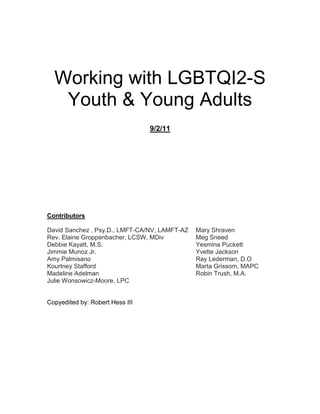This document provides guidance for working with LGBTQI2-S youth and young adults. It discusses the unique challenges they face, including higher rates of bullying, violence, suicide, and risky behaviors. It emphasizes the importance of acceptance and support from families and professionals. It defines key terms and recommends professionals enhance their cultural competence, promote safety and communication, and address the emotional and physical health needs of this population.












